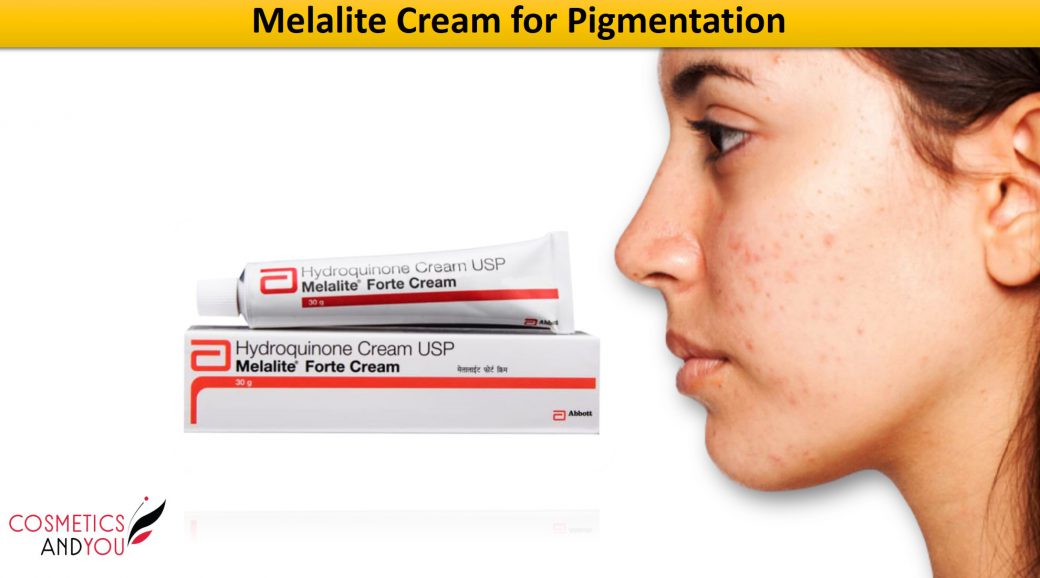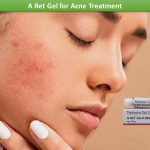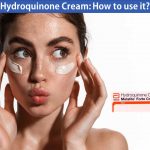Melalite Forte cream (Hydroquinone) is the standard depigmentation or skin-lightening agent. Clinically, it treats melasma, chloasma, freckles, solar lentigines, and post-inflammatory hyperpigmentation. It is most commonly used in patients with melasma and post-inflammatory hyperpigmentation.
Post-inflammatory hyperpigmentation
Post-inflammatory hyperpigmentation results from cutaneous inflammation, which causes increased melanin production. Common causes of post-inflammatory hyperpigmentation are acne, eczema, contact dermatitis, psoriasis, and burns. The most common cause of hyperpigmentation is photodamage from sunlight exposure. Inflammation increases the release and oxidation of arachidonic acid to prostaglandin, resulting in increased melanin (a substance in your body that produces skin pigmentation).
Hydroquinone effectively treats post-inflammatory hyperpigmentation along with photoprotection. Improvement in the appearance of skin with Hydroquinone occurs over several weeks to months.
Melasma
Melasma is an acquired hyperpigmentation condition that appears on the face’s sun-exposed areas, commonly the cheeks, forehead, and chin. It appears as symmetrically distributed pigmented patches. Factors contributing to melasma’s pathogenesis are darker skin, hormones, radiation, UV radiation, genetics, and antiepileptic medications.
Exposure to UV radiation is the main contributing factor, as UV radiation increases melanocyte-stimulating hormone, which increases the proliferation of melanocytes (cells in the skin that contain the pigment melanin). UV-induced inflammation leads to increased melanin production and hyperpigmentation. Pregnant women or those who use oral contraceptives are also at risk because the expression of estrogen seems to rise in melasma lesions. Estrogen hormone also triggers the release of the melanocyte-stimulating hormone, which increases melanin production.
Photoprotection is crucial to achieving maximum benefits from hydroquinone use. UVB, UVA, and even visible light stimulate melanocytes, contributing to pigmentation. Therefore, broad-spectrum sunscreens are a suggested strategy.
Is Melalite Forte safe for all skin types and tones?
Although this hydroquinone formulation is generally well tolerated, a few exceptions exist. If you have dry or sensitive skin, you may find that Melalite forte causes further dryness or irritation. This usually happens as your skin adjusts to the medicine. People with normal or oily skin are less likely to get these side effects. Topical medication trends work best for people with fair skin. If you have medium to dark skin tone, speak to your dermatologist before use. Hydroquinone 4 creams may worsen hyperpigmentation in people with darker skin tones.
Application
Hydroquinone is only used topically as a depigmentation agent. Consistency is the key to treating and controlling hyperpigmentation. You need to use this topical product every day for maximum results. It is important to perform a patch test before fully applying the product. This will help you determine how your skin will react and whether it results in undesired side effects.
A thin layer is to be applied with fingertips and rubbed into the face (or other affected areas) 1 to 2 times daily for 3 to 6 months. If there are no results after 2 to 3 months of usage, Hydroquinone 4 melalite should be discontinued. Applying hydroquinone evenly over the entire face is essential to prevent uneven pigmentation. It should also be used concurrently with sunscreen to protect the skin from damaging UV light, which increases pigmentation. Wash your hands to prevent the product from staining your clothes and other materials. Dermatologists recommended stopping therapy after this time for a few months before restarting to reduce the risk of side effects. It can also be applied only thrice weekly for more extended maintenance therapy with minimal complication. Melalite forte comes in 4% concentration.
Possible Adverse reactions and risk
Adverse effects of Hydroquinone include irritation, erythema, inflammation, allergic contact dermatitis, xeroderma, stinging, and rarely ochronosis (a blue-black or grey-blue discoloration). If you do not experience side effects, you should be able to add it to your daily skincare regimen safely. You should apply the product after cleansing and toning but before your moisturizer.
Contraindications
Melalite Forte cream should not be given to people allergic to or hypersensitive to hydroquinone. Restrict sun exposure while using A hydroquinone formulation. The use of Melalite forte requires caution with other medications that cause photosensitivity. The safety of breastfeeding mothers and children remains unestablished, so breastfeeding mothers should avoid this topical medication. Monitor for allergic reactions or long-term irritation, in which case the melasma cream should be discontinued.
Conclusion
Melalite Forte cream containing Hydroquinone has pharmacological uses in the disorder of pigmentation. Hydroquinone has been marketed as a skin-lightening product for years and remains the most frequently used whitening agent. Controlled use can be well tolerated and safe for a range of hyperpigmented conditions.
You should check with your dermatologist before use, especially if you have sensitive or medium to darker skin tone. They can instruct you on how to use this cream, if at all. If you are unsuitable for a hydroquinone formulation, your dermatologist may recommend alternative skin-lightening treatments, such as natural products and chemical peels.





